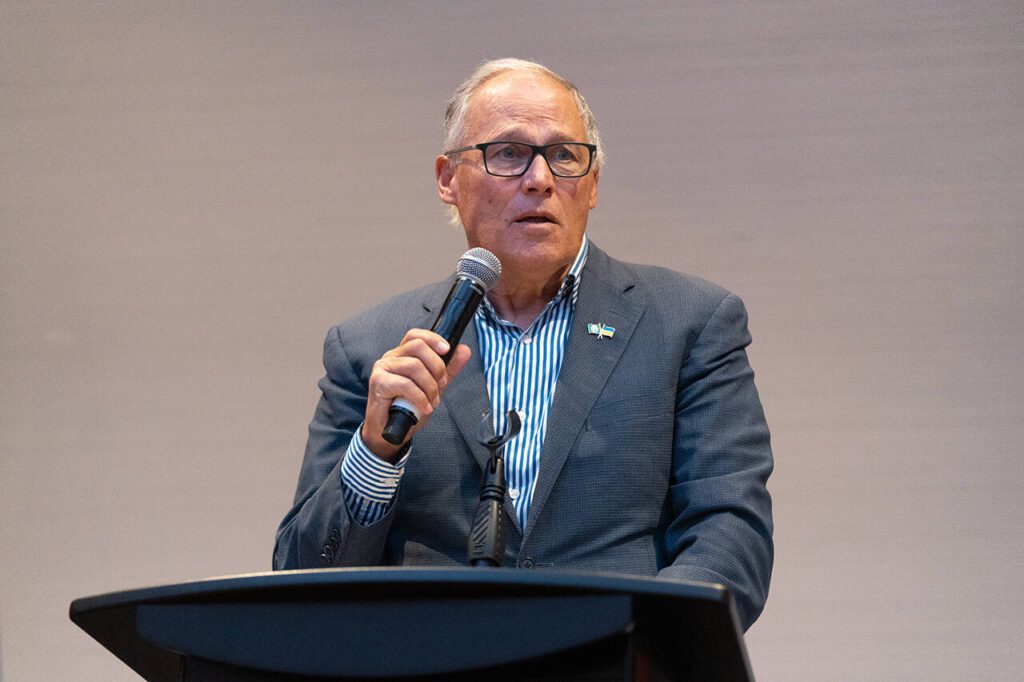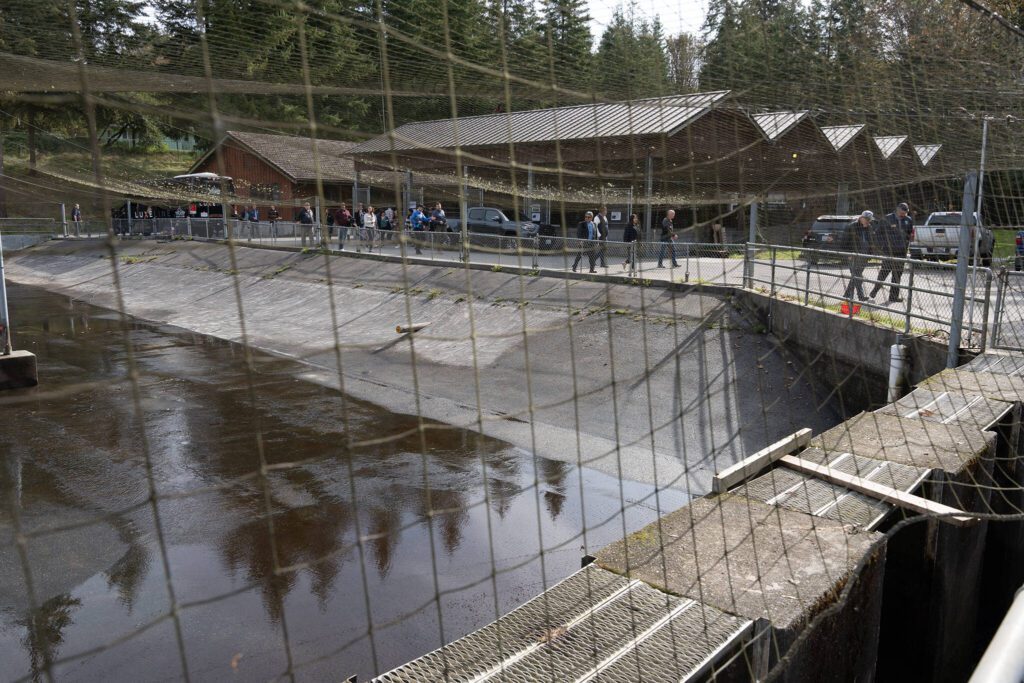TULALIP — The Tulalip Tribes celebrated $2 million of federal money to boost its fisheries programs Thursday at the Tulalip Resort Casino.
The funding, made available via the Inflation Reduction Act, was part of $240 million distributed to 27 tribes across the Pacific Northwest and Alaska to support native fisheries. Each tribe initially recieved $2 million, a total of $54 million, with the remainder of the money available through competitive grants.
Gov. Jay Inslee attended Thursday’s event along with government and tribal leaders.
“The way I like to say it, the way the salmon goes, so do we,” Inslee said during the event. “Their fates are interlocked with ours, their heritage is ours. And I’m so glad that we can now enjoy this investment by the federal government, joining the investments of the state of Washington, joining the investments of the tribe, to bring back these wonderful sources of life to the state of Washington.”
The money will allow Tulalip to upgrade the electrical system at the Bernie Kai-Kai Gobin Salmon Hatchery on the reservation, as well as build a structure in a lower hatchery that is currently situated in an earthen pond. That pond — dug out of the ground with soil forming the walls rather than materials like concrete — made it difficult to sort and release fish, hatchery experts said.
The upgraded structure, which will have multiple raceways and allow for water reuse, has been in the design process for years, but with the new funding, it’s likely the facility can finally be built.
“It’s just bringing an 18th century, 19th century hatchery into the latest century,” said Mike Crewson, a salmon enhancement scientist for the tribes.
Tulalip’s hatchery releases about 11.5 million salmon per year, providing opportunities for tribal fishers on the reservation and contributing to commercial sports fisheries across the Pacific Northwest, according to the tribes.
The new funding arrived at the right time, said Jason Gobin, the executive director of natural and cultural resources at the Tulalip Tribes. The hatchery, which started in the 1970s, is named after his grandfather.
“This has been a long time coming,” Jason Gobin said. “We’ve piecemealed the funding together to get to this point, and we’re starting to piecemeal together tribal hard dollars, and this IRA [Inflation Reduction Act] funding is coming at the right time when we’re ready to go. That’s going to be a blessing, and I think what you’re going to probably see with a lot of the tribes is trying to improve the facilities that were put in decades ago.”
Teri Gobin, the tribes’ chair has been fishing for salmon since she was a child. She expressed gratitude to the National Oceanic and Atmospheric Administration and the federal Bureau of Indian Affairs, which partnered to deliver the funding to regional tribes.
“We are the salmon people, all the Pacific Northwest tribes,” Teri Gobin said. “We are salmon people, this is how we’ve lived for many generations.”
Fourteen species of salmon and steelhead are currently listed as threatened or endangered under the Endangered Species Act, according to NOAA.
The hatchery’s most recent upgrade was a water filtration system, allowing the hatchery to reduce its water use and lower the chance of disease among the fish.
Will Geschke: 425-339-3443; william.geschke@heraldnet.com; X: @willgeschke.
Talk to us
> Give us your news tips.
> Send us a letter to the editor.
> More Herald contact information.




























